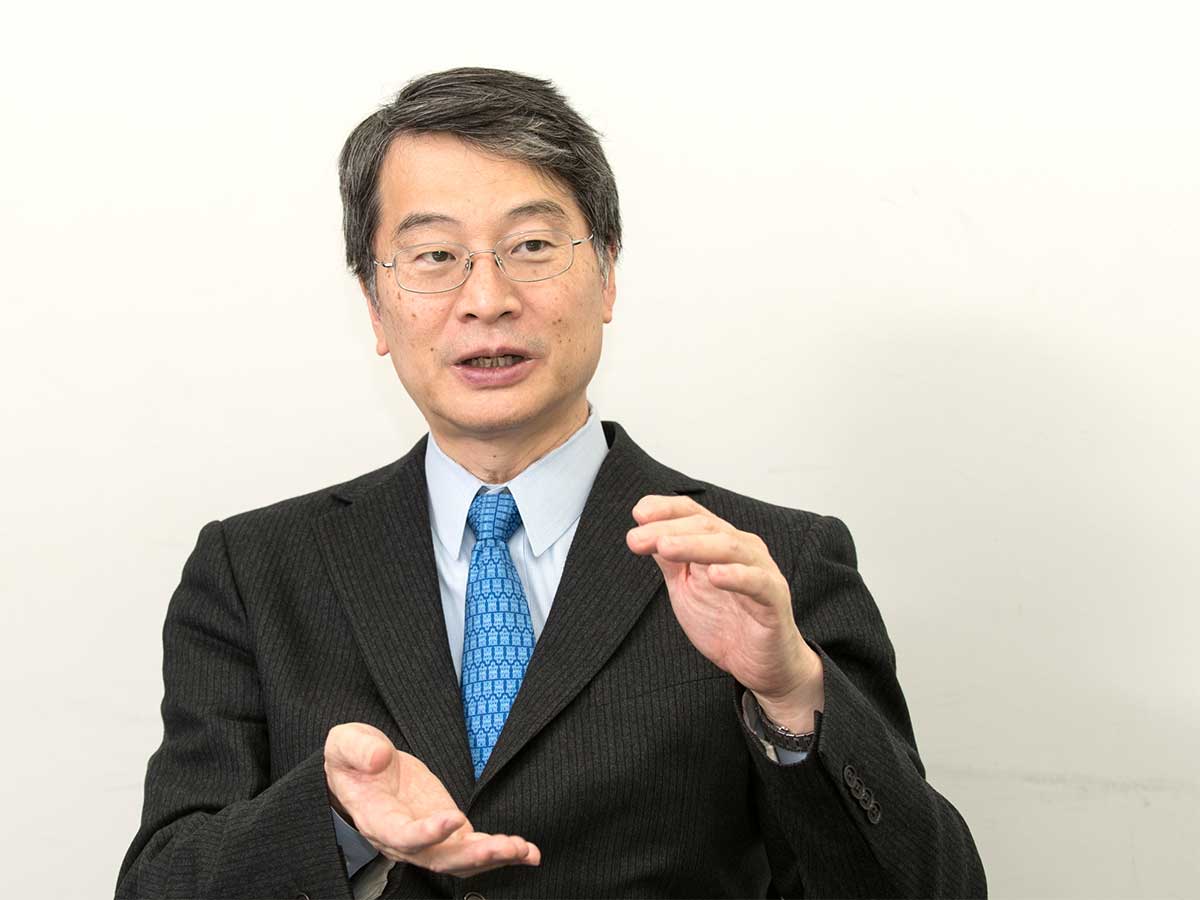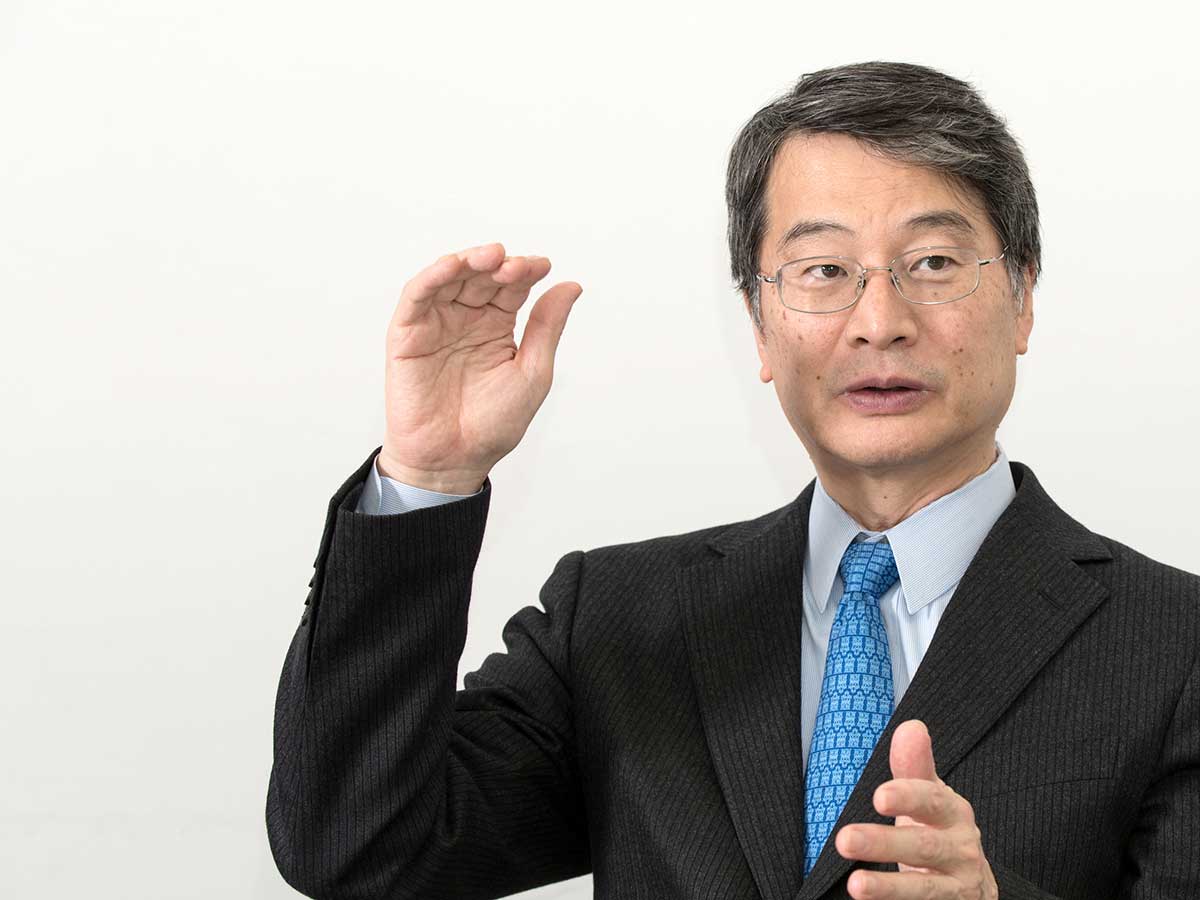Naoto Onzo, Professor at Waseda University’s School of Commerce and Management, is the translator of “Marketing 4.0: The Ultimate Law of the Smart Phone Era. Two years have passed since “Marketing 4.0” was published, and we asked him what he thinks and where marketing is going. We asked Prof. Onzo.
*The interview was conducted in January 2020.

Contents
Before considering “Marketing 4.0,” let’s first look back at “Marketing 3.0”. “Marketing 3.0”, published in 2010, had a great impact in that it “sees the consumer as a holistic being with mind, heart, and spirit” and “explains the importance of social value to the companies”. I, however, felt a little uncomfortable. I felt that the subtitle “New Laws in the Age of Social Media” should include a more digital perspective on what marketers should focus on and pay attention to in the age of social media penetration.
“Marketing 4.0”, published a few years later and titled “The Ultimate Law of the Smartphone Era,” fully addresses the questions I had about 3.0. Marketing 4.0″ summarizes the customer journey of today’s smartphone-owning population using a very well-developed 5A (Awareness→Appeal→Research→Action→Recommendation) model.

The most important feature of the 5As is that they are not a funnel-shaped model. In the traditional model represented by AIDA (Attention→Interest→Desire→Action), the basic premise was that the number of consumers would narrow down and decrease as they progressed through the stages. However, now that social networking services have become pervasive, the influence of community and word-of-mouth has resulted in “more people taking action than those surveyed” or “those who are aware of a product “liking” it and recommending it even if they have not purchased it. I think the 5As are an excellent example of how consumers in the age of social networking do not fit into the traditional one-way funnel.
Expect typologies of business transformation and value creation
 The 5A is a highly complete model. Many of you must feel that it is a valid model because it is well-explained and incorporates consumer behavior patterns. However, the 5As are not perfect; when utilizing the 5As, we must keep in mind that the customer journey is not all about digital media. My sister owns a smartphone, but she is not an active user of social networking services or online shopping. On the other hand, there are people in their 70s and 80s who are highly digitally literate. We must always keep in mind the diversity of consumers.
The 5A is a highly complete model. Many of you must feel that it is a valid model because it is well-explained and incorporates consumer behavior patterns. However, the 5As are not perfect; when utilizing the 5As, we must keep in mind that the customer journey is not all about digital media. My sister owns a smartphone, but she is not an active user of social networking services or online shopping. On the other hand, there are people in their 70s and 80s who are highly digitally literate. We must always keep in mind the diversity of consumers.
There is also something missing from “Marketing 4.0. The content is too biased toward communication-related issues, and nothing beyond “Marketing 4.0” has been published on how to communicate with consumers in the age of social networking and how to capture their customer journeys. But remember, marketing is about “creating customer value, communicating it to consumers, and persuading them”. Therefore, it is very unfortunate that “Marketing 4.0” barely mentions the creation of customer value.
Today, the world is full of examples such as Uber and Airbnb that are transforming existing businesses and creating new customer value through the use of digital technology. Therefore, after “Marketing 4.0,” I would like to see business transformation through digital technology and the typification of value creation. If this is demonstrated, it will be a great help to those who are challenging the revitalization of declining industries and the revitalization of traditional industries.
Things to remember when using 5A
 There are several points to keep in mind when utilizing the 5As. One of them is the risk of being too digitally oriented. I spent four years conducting a demonstration experiment on combined digital (i.e., e-mail) and analog (i.e., paper DM) measures in an industry-academia collaboration with Japan Post Co. and Fujifilm Corporation. As a result, we found that the coupon usage rate increased when we combined not only digital measures but also analog measures.
There are several points to keep in mind when utilizing the 5As. One of them is the risk of being too digitally oriented. I spent four years conducting a demonstration experiment on combined digital (i.e., e-mail) and analog (i.e., paper DM) measures in an industry-academia collaboration with Japan Post Co. and Fujifilm Corporation. As a result, we found that the coupon usage rate increased when we combined not only digital measures but also analog measures.
Other findings related to consumer psychology included: “It is more effective to implement measures in the order of analog to digital,” “The digital native generation, those in their 30s and younger, are happier to receive paper first,” and “Repeated digital approaches to loyal top customers may give the negative impression that “I should be special, but…” etc.
New customer journeys created in real stores
Having discussed “Marketing 4.0,” let me conclude with “Retail Marketing 4.0” (2020, Asahi Shimbun Publications). Digital technology is entering real stores at a tremendous pace, and retail is evolving dramatically.
The best example of this is Amazon Go, which uses cameras, sensors, and AI to enhance convenience for users. It is often referred to as an unmanned convenience store, but this is not to say that there are no humans; in the open kitchen, which is visible to users, humans are cooking and serving fresh sandwiches. I believe that retailers like Amazon Go will expand into a wide range of industries, arming themselves with all the digital weapons they can muster and still taking advantage of their human-realistic qualities.
In real stores, sensory marketing will also progress, using stimulation of the five senses (sight, sound, smell, taste, and touch) to subconsciously influence consumer behavior. You may be thinking, “Haven’t sales promotions that appeal to the sense of smell and hearing been around for a long time? However, the measures taken by bakeries or curry shops to encourage customers to visit their stores by wafting the aroma of their products are different from sensory marketing, which appeals to the “unconscious” by stimulating people’s memory of the product through the aroma.

The techniques used include, “It is easier to get an agreement from someone if they sit in a soft chair rather than a hard chair,” and “Classical music as background music in a wine store sells fine wines”. Sensory marketing aims to influence customer behavior by stimulating the five senses, which have nothing to do with products. TI believes that this will become increasingly important when considering the customer journey as one method of supplementing perspectives such as “sense” and “human nature” that cannot be covered by measures in the digital domain.
Approaching the unconscious has not received much attention in traditional marketing activities. This is because a company’s competitiveness is solely based on the quality of its products and services, and companies that could not provide such quality were quickly eliminated. Nowadays, however, the difference in quality is extremely small. It is what is called commoditization. Therefore, in the business world, the battle for the smallest difference is fought by entering into the realm of the unconscious. To make the slightest difference into a competitive edge, I would like you to explore the customer journey for your products and services from all aspects, including digital, analog, consumer awareness, and unconsciousness, based on the 5As.
Naoto Onzo, Professor, School of Commerce, Waseda University Profile
Graduated from the School of Commerce, Waseda University, and after working as an associate professor at the same school, became a professor in 1996. From 2008 to 2012, he was Dean of the School of Commerce at Waseda University. Specialized in marketing strategy. Doctor (Commerce). Public service includes serving as an expert member of the Fiscal System Council of the Ministry of Finance, President of the Japanese Association for the Study of Consumer Behavior, and a member of the Certified Public Accountant Examination Committee.

